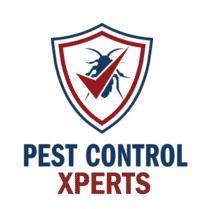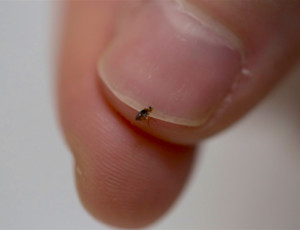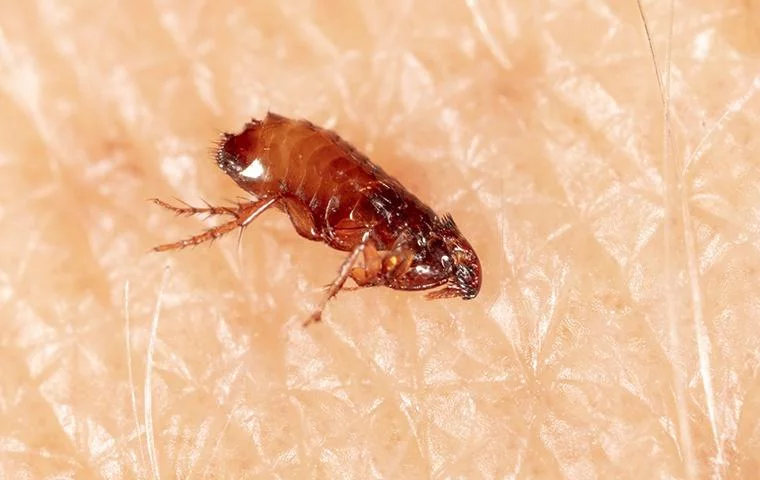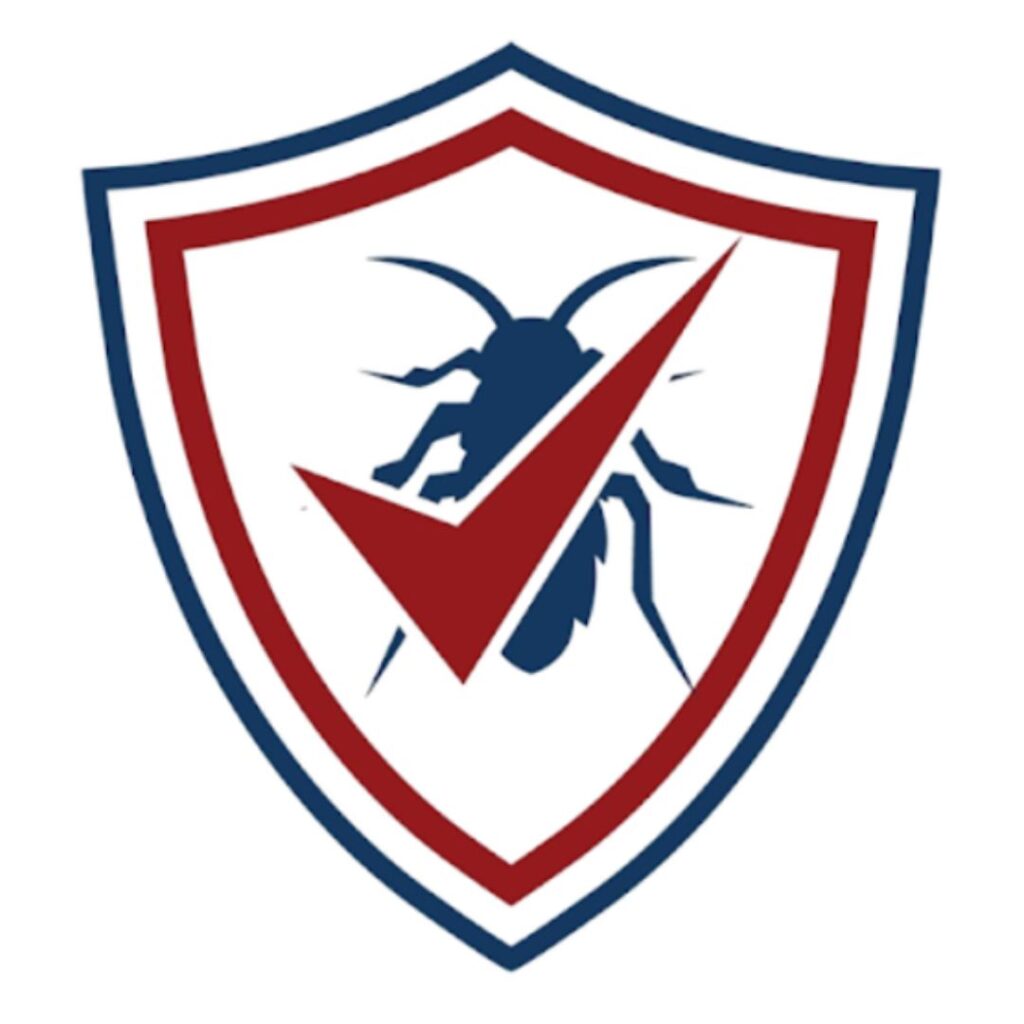Professional Flea Removal in Binghamton
Serving residences and businesses throughout Binghamton, Vestal, Johnson City, Endicott, Endwell, Windsor, Whitney Point, Owego, and Apalachin.
Pest Control Xperts delivers full scale flea removal across the Southern Tier of New York. A single flea can leap onto a dog during a riverfront walk or hide inside a thrift shop rug, then lay dozens of eggs that tumble into carpet fibers and grassy soil. Within thirty days a small introduction becomes thousands of biting parasites that torment pets, disturb family sleep, and threaten public reputation for any animal friendly business. Our local exterminator team relies on detailed inspection, science driven treatment, and practical prevention coaching so property owners in Binghamton and neighboring communities enjoy comfortable, flea free living and work spaces all year round.
Why Fleas Thrive in the Binghamton Area
River valley humidity
Binghamton lies where the Chenango meets the Susquehanna. Evening fog settles into yards and shaded lawns, keeping turf moisture high enough for flea larvae to survive even after sunny afternoons. Spring rainstorms and melting snow saturate mulch beds beneath sugar maple canopies in Vestal and Endwell, creating humid pockets for eggs to hatch.
Warm interior temperatures
Summer daytime highs often reach the middle eighties while overnight lows seldom fall below sixty. Flea development speeds up with every warm night, letting eggs become adults in as little as three weeks. Winter brings plenty of snow, yet interior heating inside suburban ranch homes and downtown loft apartments stays near seventy degrees. Brown dog fleas never need to pause breeding when they live on pet bedding beside radiators.
Wildlife corridors
White tailed deer wander the tree lines bordering local creeks. Raccoons and opossums raid trash bins behind residential fences. Stray cats travel those same routes. Each animal carries adult fleas that drop egg clusters into grass and leaf litter where neighborhood pets like to sniff and play.
High pet ownership and frequent travel
College students, medical staff, and state employees move in and out of Johnson City rentals all year. Pets ride in shared vehicles, visit groomers, and stay at dog daycare during holiday trips. Suitcase pockets and cargo areas provide hiding space for hitchhiking fleas that infest fresh locations.
Recognising how climate, wildlife, and human behavior interact across Broome County helps Pest Control Xperts time barrier treatments before seasonal outbreaks peak.
Flea Biology and the Hidden Problem
Fleas advance through four life stages, three of which hide away from pets and people.
- Egg
Smooth, white, smaller than a grain of sand, eggs slip off hosts onto carpet, throw blankets, crate pads, and shaded soil. At indoor temperatures near seventy degrees they hatch in about two days. - Larva
Blind and worm-like, larvae avoid light by wriggling deep into carpet piles and mulch layers. They feed on dried blood droplets that adult fleas excrete. After two molts they seek a protected spot to spin silk. - Pupa
Inside a silk cocoon mixed with dust, the pupa can wait for vibration and carbon dioxide that signal a host is near. Pupae survive many weeks in storage items such as seldom used blankets or attic boxes. - Adult
Hungry adults emerge, leap onto pets or ankles, and begin feeding within minutes. Females need daily blood to keep producing forty plus eggs each twenty four hour period.
Because only adults live on hosts, spraying pets alone never solves an infestation. Effective flea removal targets every life stage where it hides indoors and outdoors.
Challenges Fleas Create
- Bites and itching disrupt sleep and cause restless pets to chew their skin raw.
- Flea allergy dermatitis triggers scabs and fur loss that require costly veterinary care.
- Anemia in young animals arises when heavy infestations drain blood quickly.
- Tapeworm transmission occurs when pets swallow infected fleas during grooming.
- Reputation damage hits dog friendly cafés, rental cabins, and daycare centers the moment a guest reports a bite online.
Professional intervention limits these consequences and protects both health and business ratings.
The Pest Control Xperts Five Step Flea Removal Program
Step One: Comprehensive Inspection
A certified exterminator meets residents or managers to review pet routines, recent travel, and landscape conditions. A white sock drag through shaded turf collects live fleas for species confirmation. Flashlights and slit probes expose larvae hidden under baseboard edges, couch skirts, and crate pads. Each finding is photographed and entered on a digital site map.
Step Two: Interior Treatment without Hyphen
- Vacuum extraction removes adults, eggs, and dried blood debris from carpets, upholstery, and mattress tufts. Bags are sealed in plastic for curb pick up.
- Insect growth regulator applied along floor wall junctions stops larvae from reaching adulthood for up to five months.
- Micro encapsulated adulticide overlays the growth regulator to kill emerging fleas while remaining gentle on fabric and hardwood.
- Targeted steam flushes eggs from leather seams, thick drapes, and plush toys where liquid sprays are not suitable.
Step Three: Exterior Treatment and Habitat Change
- Residual liquid barrier circles the foundation and extends three feet into turf, targeting shaded patches where pets rest.
- Granular control product is spread beneath shrubs, around swing sets, and along fence lines where moist soil shelters larvae.
- Botanical dust is blown into crawl spaces, dog house floors, and deck joist cavities to continue working despite valley humidity.
- Wildlife deterrent coaching covers trash lid security, sealing deck skirting, and trimming dense groundcover that shelters stray animals.
Step Four: Client Preparation
Owners maximize results by hot washing pet bedding, vacuuming car seats, mowing lawn grass under three inches, and starting veterinarian recommended flea prevention on every dog or cat the day treatment begins. Cutting clutter under beds allows heat or residual products to reach hidden spots.
Step Five: Follow Up and Monitoring
Eggs buried deep in carpet padding or outdoor thatch can hatch up to twenty one days later. Pest Control Xperts returns within three weeks to repeat drag tests, check interior glue boards, and retreat any lingering activity at no extra cost during the service window. Properties bordering wooded acreage in Windsor or high traffic pet facilities in Johnson City often choose quarterly exterior maintenance for ongoing defense.
Seasonality Guide for Flea Activity
- March and April Rain soaked soil plus warming daytime air triggers the first hatch in outdoor leaf litter.
- May through August Long warm evenings speed the life cycle. Most calls arise during these months.
- September and October Cool nights push fleas toward house foundations where pets rest on sunny stoops.
- November through February Indoor heating maintains ideal conditions for brown dog fleas to keep breeding even while snow drifts outside.
Our scheduling team plans preventive exterior treatments at least two weeks before each seasonal surge.
Why Broome County Chooses Pest Control Xperts
- Local weather data informs our timing and product selection.
- Integrated methods combine mechanical extraction, growth regulation, residual barriers, dust, and client education for durable control.
- Transparent online reports feature photographs, product labels, and drag test counts ready for pets shelters, landlords, or health inspectors.
- Flexible appointments include sunrise, evening, and weekend slots to match work from home schedules or business hours.
Ongoing maintenance plans cost less over time than repeated emergencies and protect five star property reviews.
Everyday Prevention Tips
- Comb pets with a fine tooth flea comb after riverfront walks and drop captures into soapy water.
- Keep lawn grass trimmed below three inches and rake thatch so sunlight dries soil.
- Create a gravel strip between fence lines and play areas to reduce shaded dampness.
- Store bird seed in tight sealing bins and sweep spillage promptly.
- Repair leaking taps, garden hoses, and air conditioner drip lines near foundations.
- Change bright porch bulbs to warm light emitting diode versions that attract fewer night insects.
- Shake out camping gear after weekend trips before storing it in closets.
- Inspect second hand rugs and couches with a flashlight prior to purchase.
- Maintain veterinarian approved flea prevention year round on every pet.
- Schedule an annual Binghamton pest control inspection each spring.
Frequently Asked Questions
How soon will bites stop
Most clients experience noticeable reduction within forty eight hours of treatment. Complete elimination follows the scheduled follow up once any dormant pupae emerge and contact treated surfaces.
Do products harm landscaping
Technicians apply treatments at label rates targeted to shaded soil rather than edible gardens. Application steers clear of blooming plants visited by pollinators.
Must residents leave during service
No. Occupants can remain onsite. Keep children and pets away from treated areas until surfaces are dry, usually about two hours, and wait forty eight hours before vacuuming to allow the growth regulator to bond.
Contact Pest Control Xperts Today
Itchy ankles, restless pets, or dark specks on bedding reveal fleas are feeding now. Delaying service lets another generation hatch and spread deeper into carpets, vehicle upholstery, and backyard turf. Pest Control Xperts is ready with swift, thorough flea removal in Binghamton, Vestal, Johnson City, Endicott, Endwell, and Windsor. Our exterminator team inspects every corner, treats with precision, and equips you with prevention steps suited to river valley living. Contact us Today for a comprehensive evaluation or to enroll in a maintenance plan that keeps your property flea free through every season.





